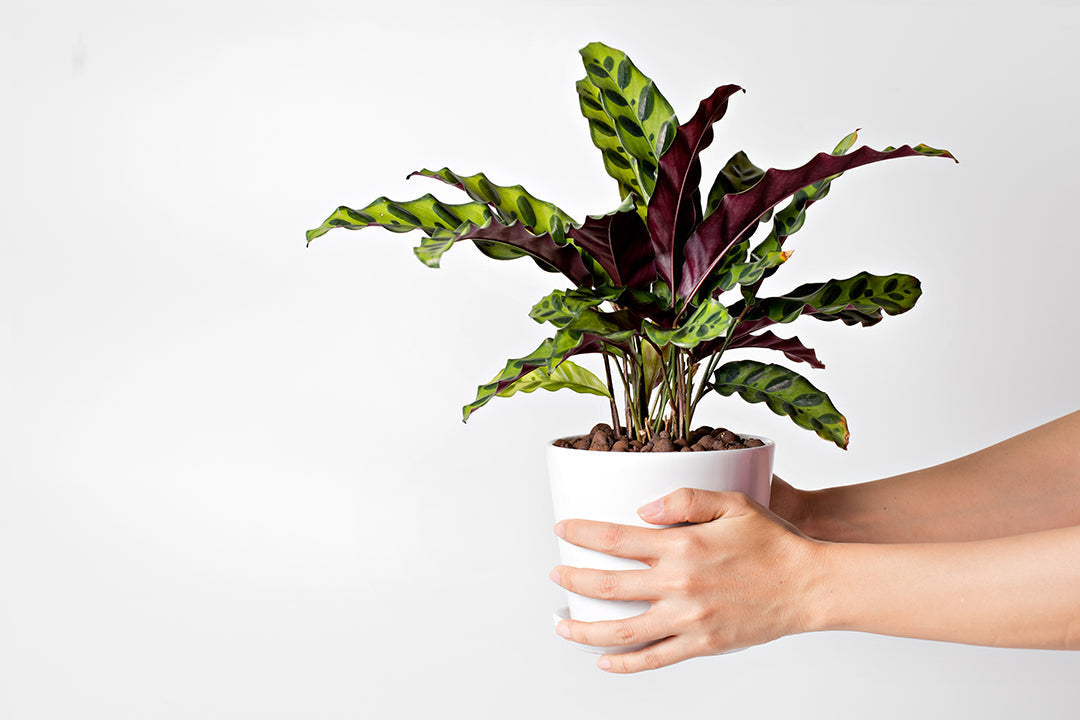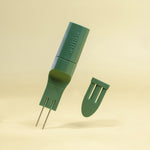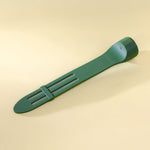
Get to know: Calathea lancifolia
Take a closer look at a selected plant species and the care required to keep them happy 🙂
One snake you’ll be very pleased to find in your home! Rattlesnake Plants (Calathea lancifolia) aren’t the easiest of houseplants to care for, but if you give them the proper attention, you will be rewarded with an impressive display. Indeed, the rattlesnake has been picked by many as a must-have for 2021! Plus, they’re non-poisonous and safe for humans, dogs, and cats.

The plant can grow up to 30 inches tall, and is a decorative perennial with strappy, spotted wiggly leaves in various shades of green and eye-catching deep, purple undersides.
How to care for your Rattlesnake plants.
Light
This gorgeous plant doesn’t like much direct sunlight on it’s leaves as the spotted markings will begin to fade before scorching. The Rattlesnake is a great low-to-medium light plant. By all means have it near a window but ensure it doesn’t have intense afternoon light.
Soil & potting
When it comes to soil, it needs to be a good quality potting mix that is well-draining. A light sandy mix of two parts peat / one-part perlite would be suitable. They also respond well to slightly acidic or neutral pH levels (avoid alkaline soils). Although these plants like to keep moist, be careful to prevent soggy soil which contributes to root rot (consider a pot with drainage).
As the plant grows, you may need to re-pot to something wider so the roots and new systems have more room to grow. Alternatively, these plants are easy to propagate by diving the plant in half or fourths once established.
Water
Keeping the soil moist with frequent watering is important but be careful with your soil and pot choice, and not to overwater as it doesn’t tolerate waterlogged conditions. Not enough water and the leaves will curl up, too much and they will turn yellow.
Temperature & humidity
Where you choose to position your plant will make a huge difference in terms of its health and of course growth. Rattlesnakes like it warm, with preferable room temperatures between 18-28c and no lower than 15c. Temperatures below this and the leaves will wilt and brown, and eventually die off. Avoid drafts and sudden temp drops. As a tropical plant, it also prefers high humidity and so your bathroom or kitchen are perfect spots. You can also stand your pot on a tray with pebbles to create moist conditions and/or regularly mist your plant with lukewarm water.
Food (nutrition)
A dose of a balanced liquid fertilizer every four weeks during spring and summer will have your foliage looking healthy and all the more attractive.

Diagnosis cheat sheet
Leaves curling – The plant is underwatered and/or too dry air (low humidity).
Many yellowing leaves – The plant is overwatered.
Brown leaf tips – Dry air and a need for higher humidity.
Limp stems – Serious issue caused when the plant is overwatered in cold temperatures.
Of course, Willow can track all these things for you and alert you when an action is required to keep your plant, be it a Rattlesnake or any other, happy. Life saver.




